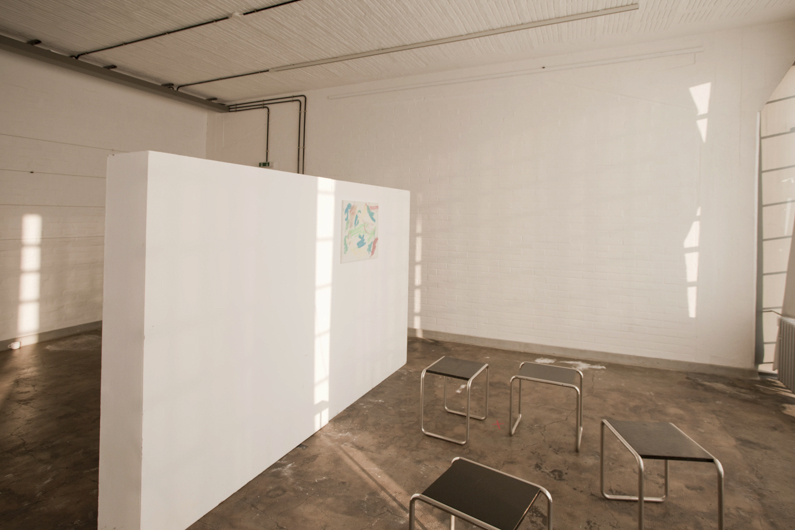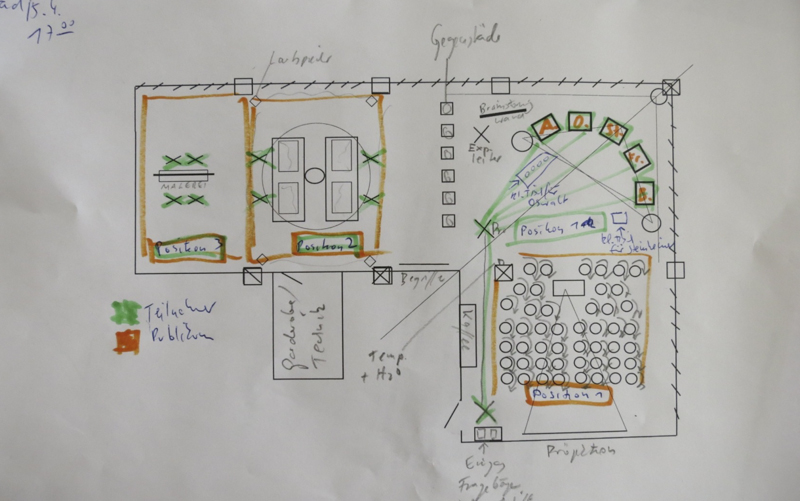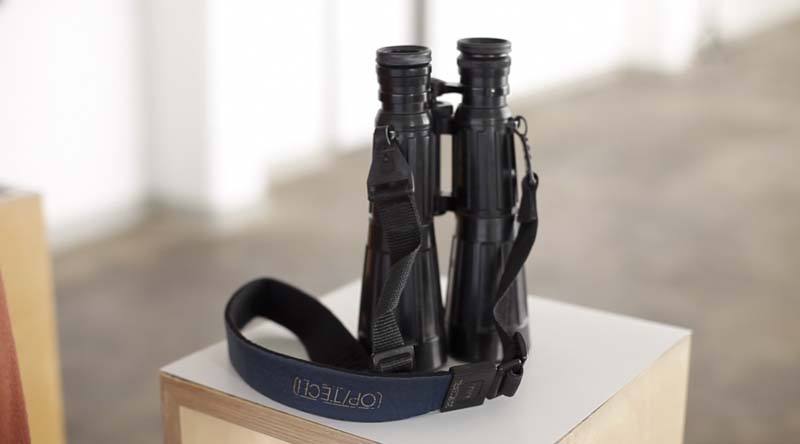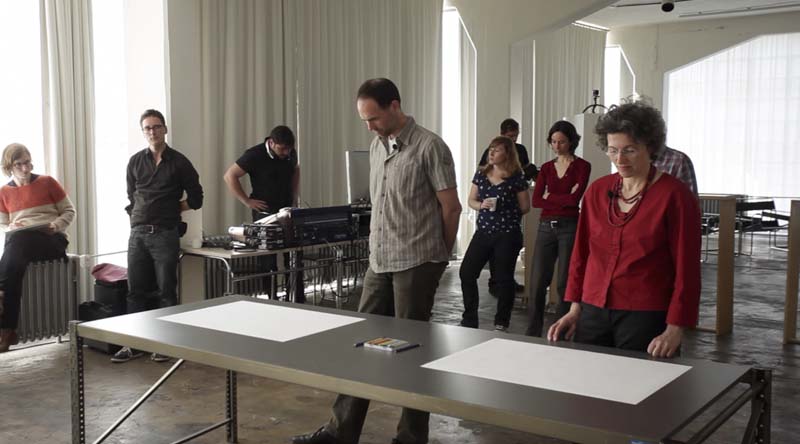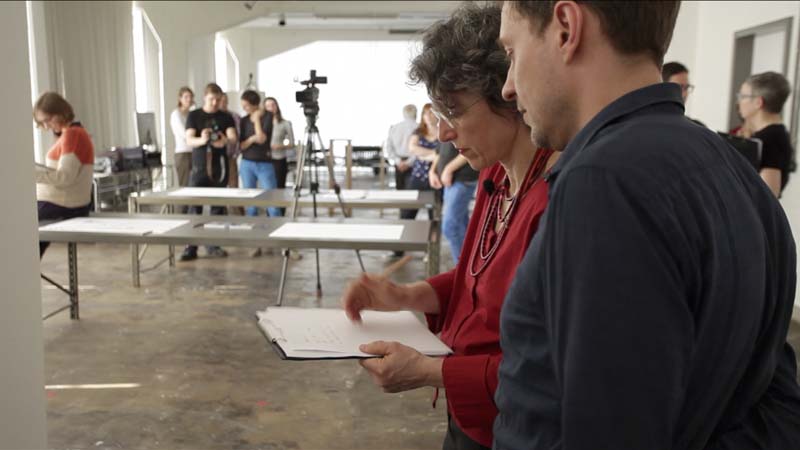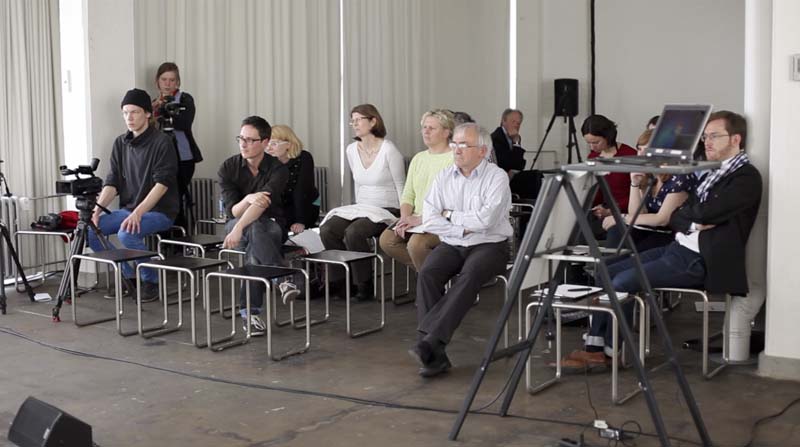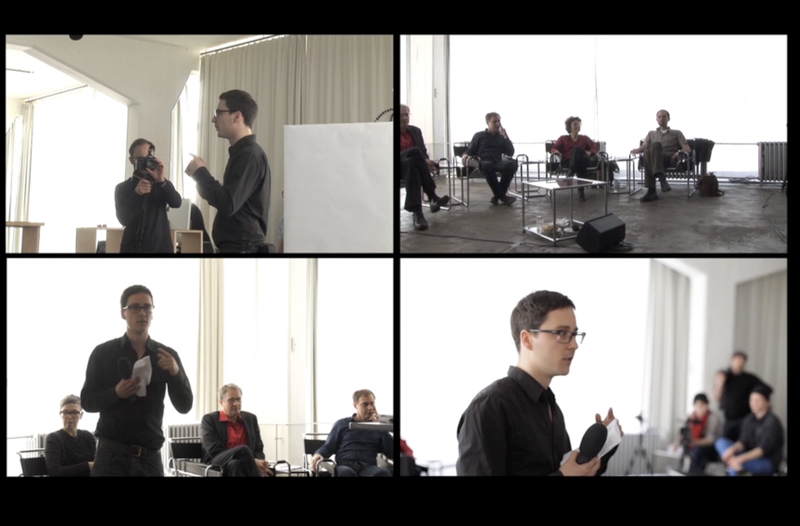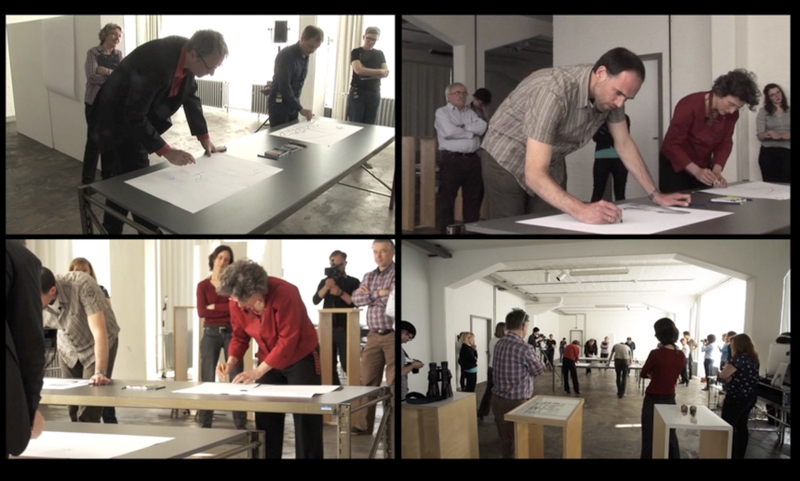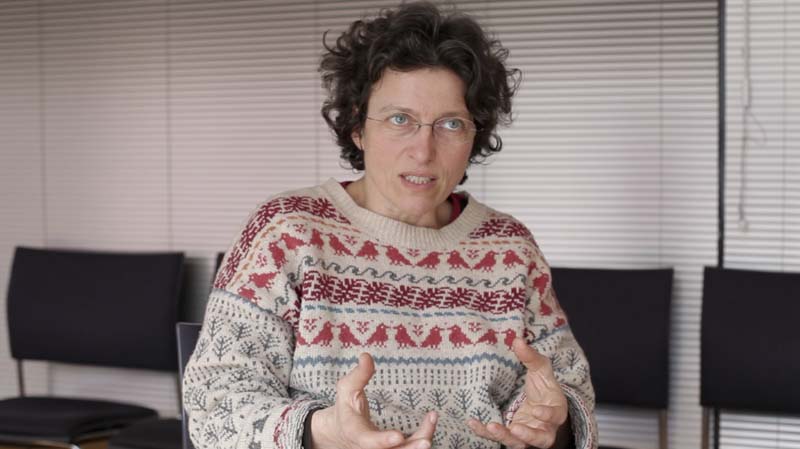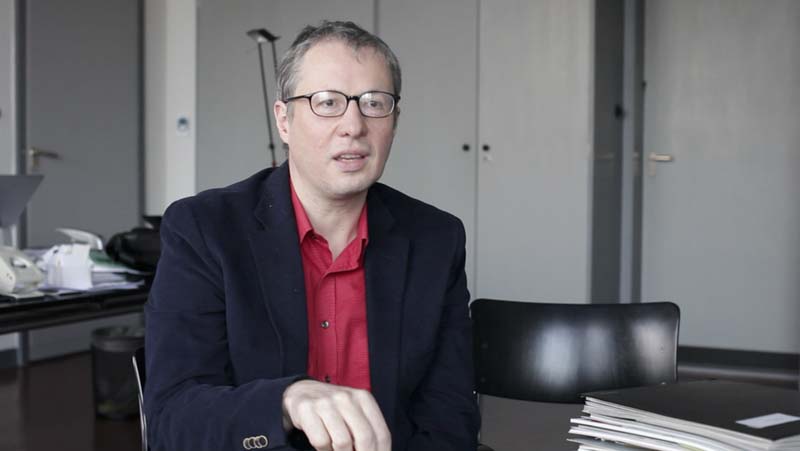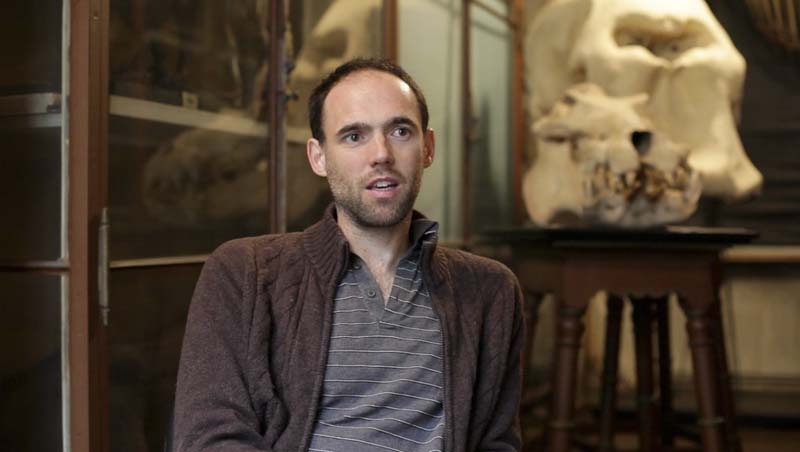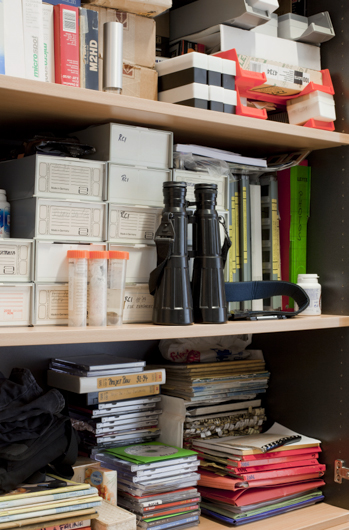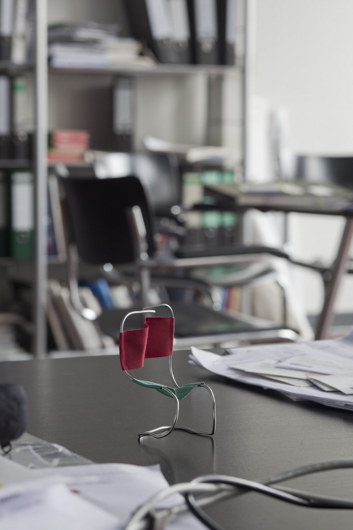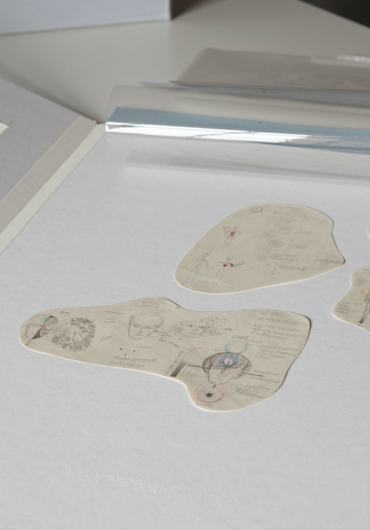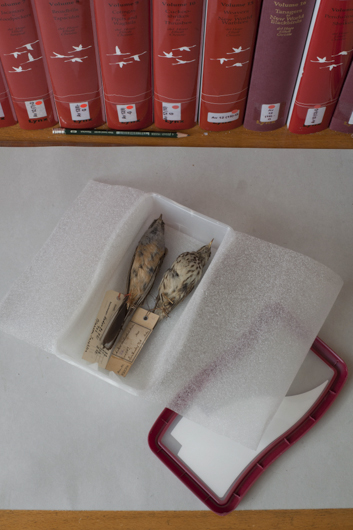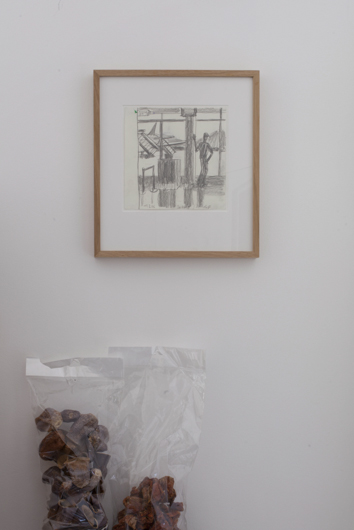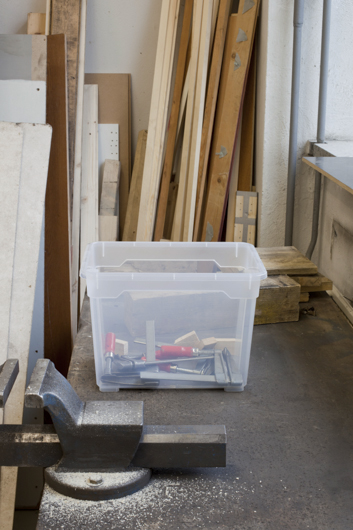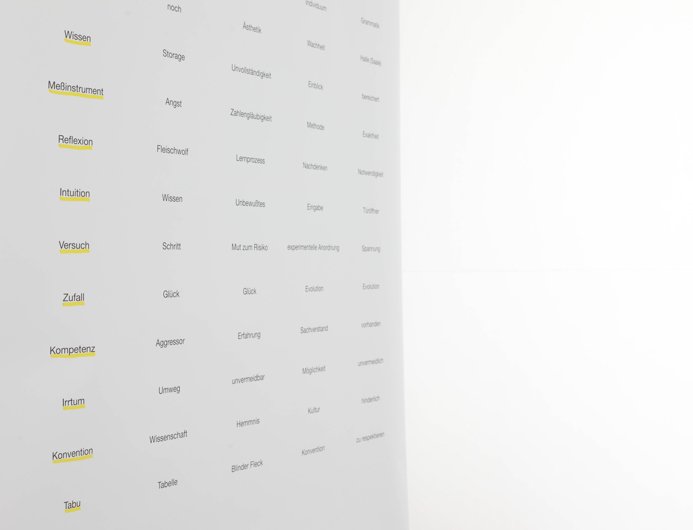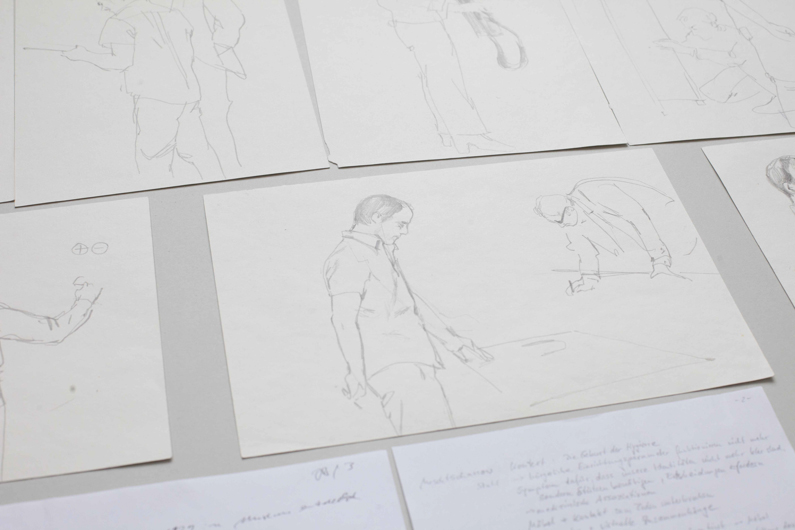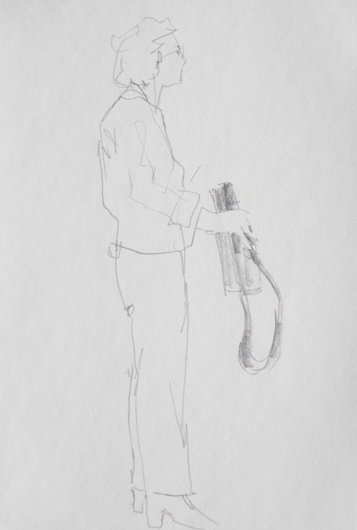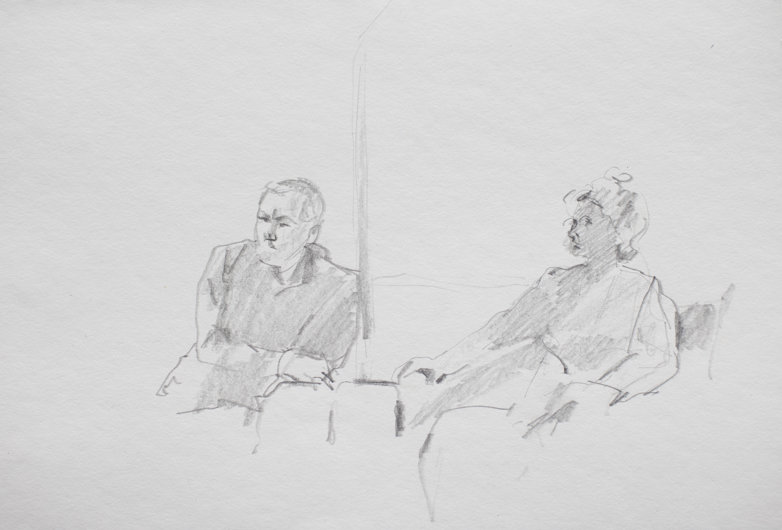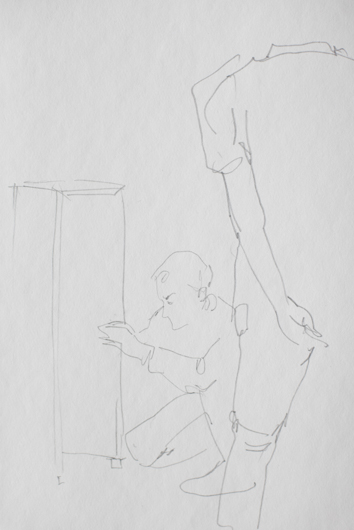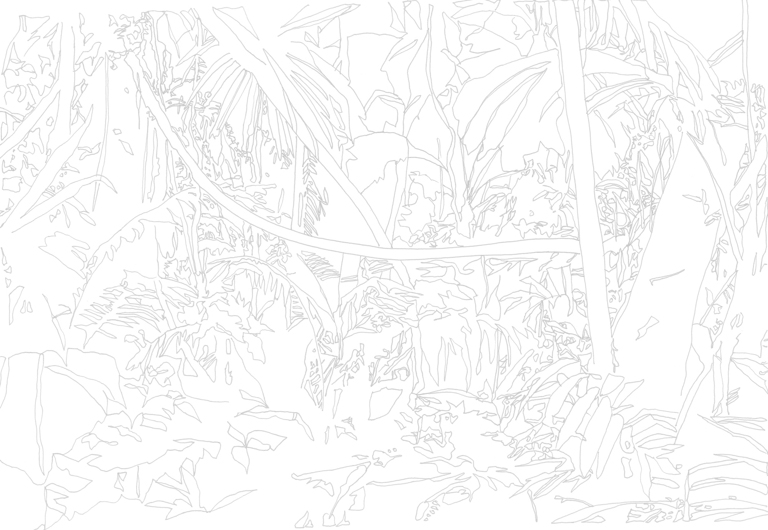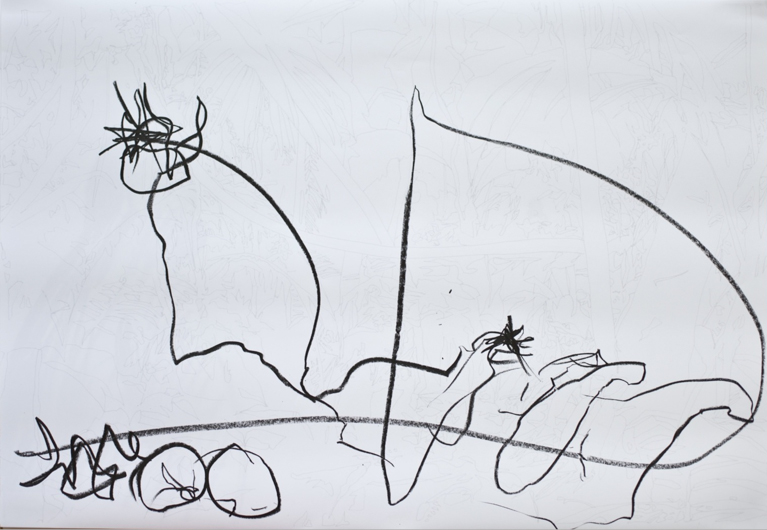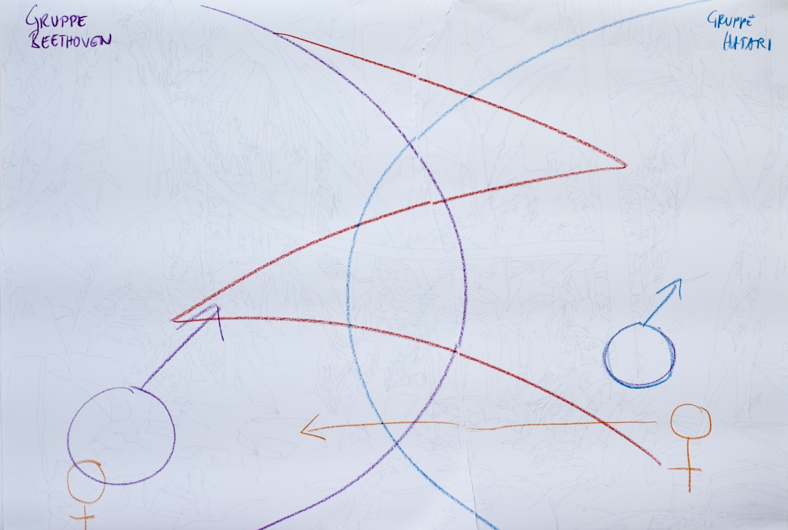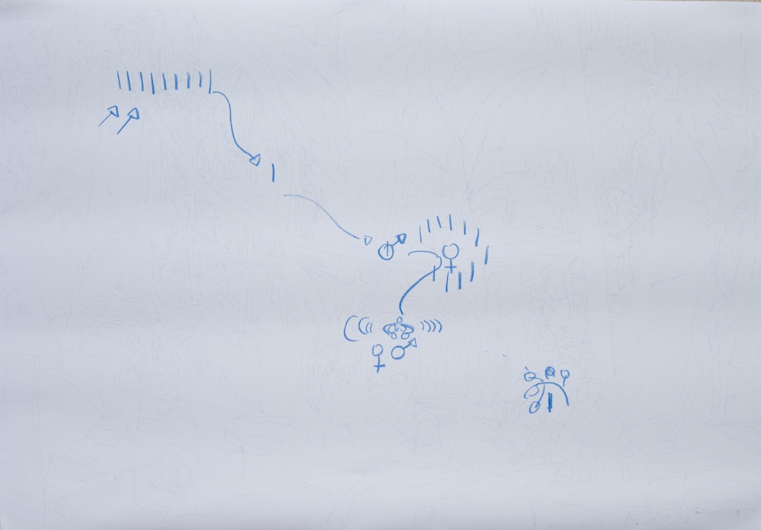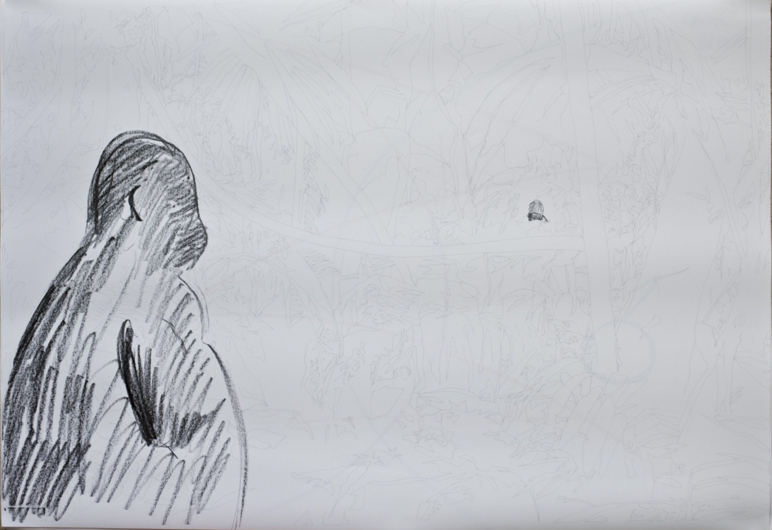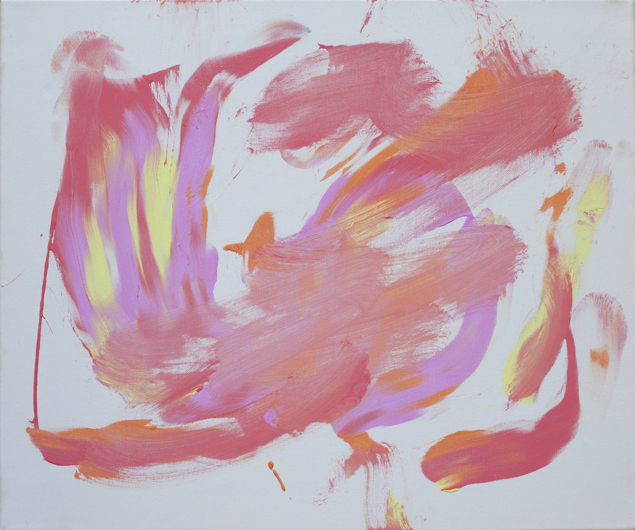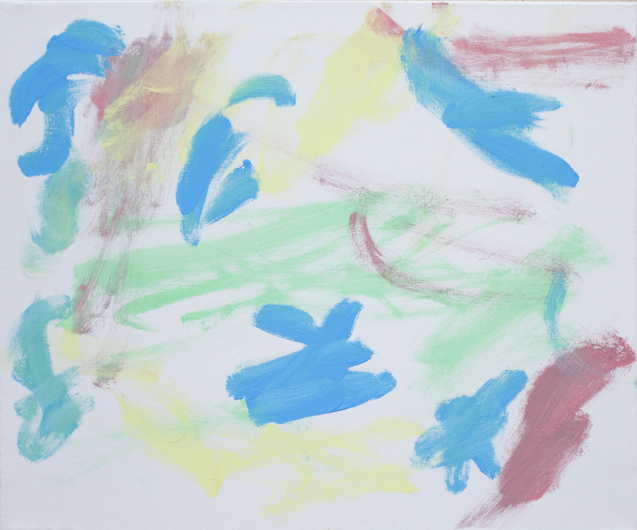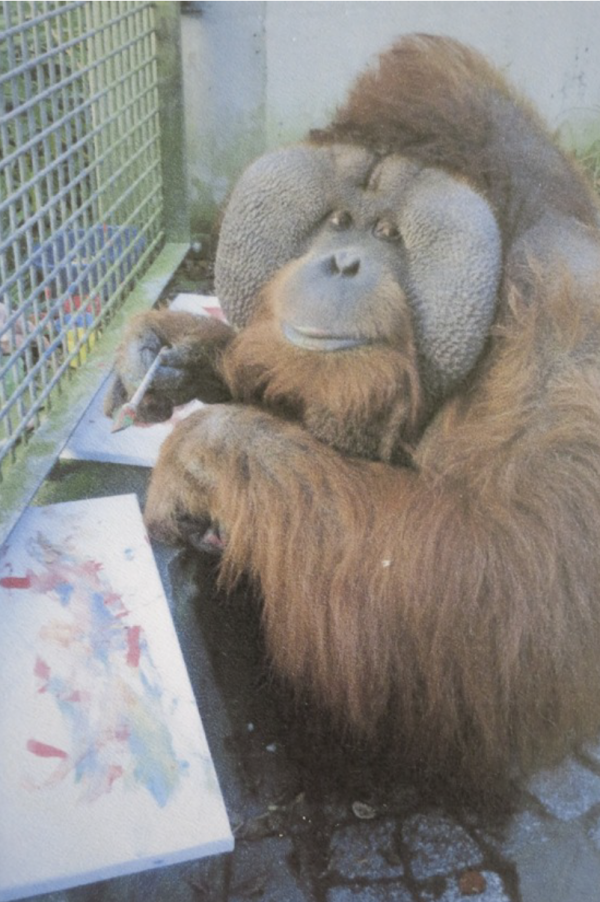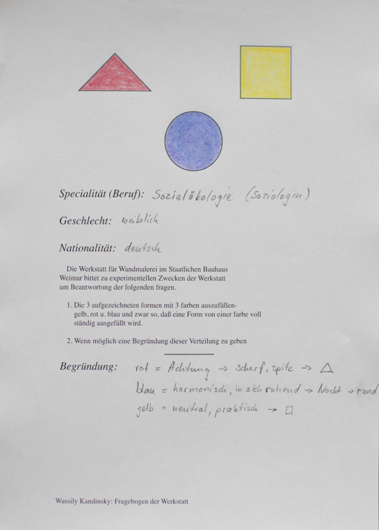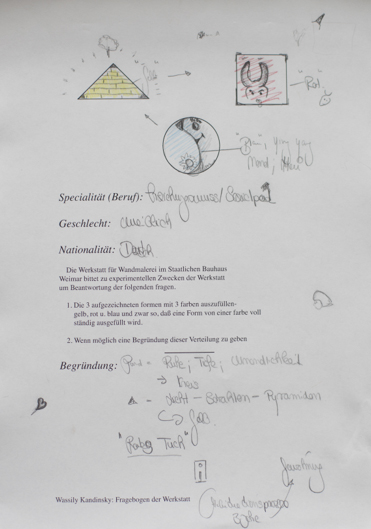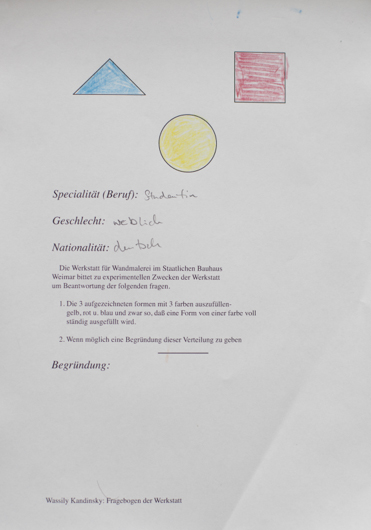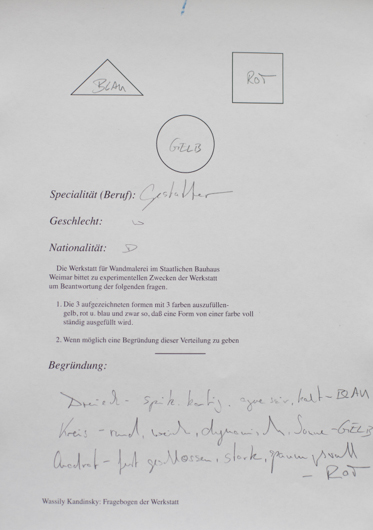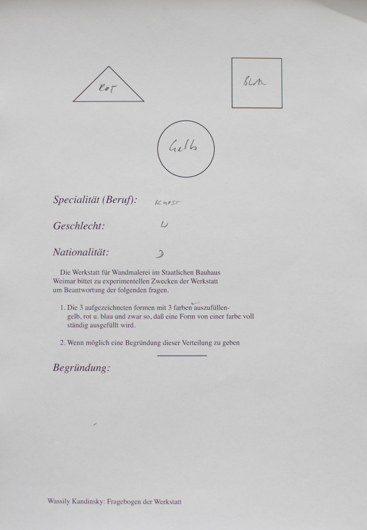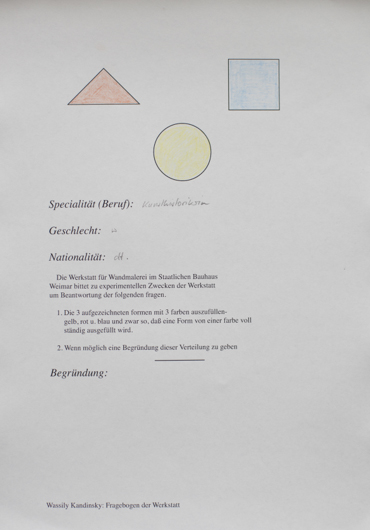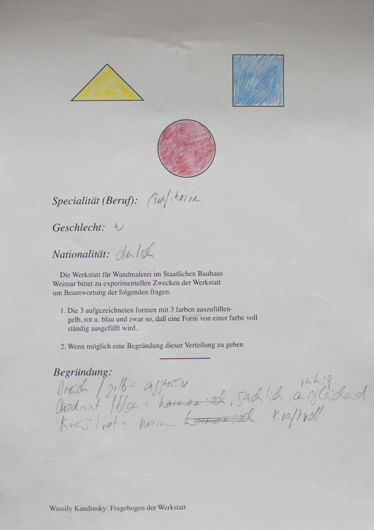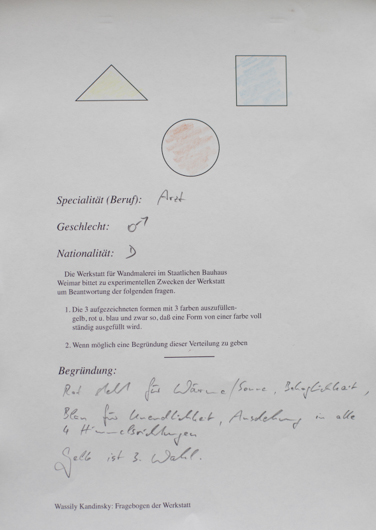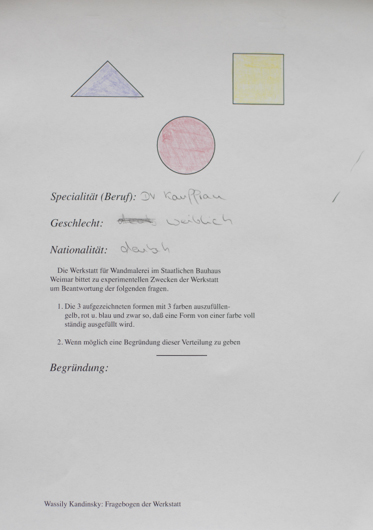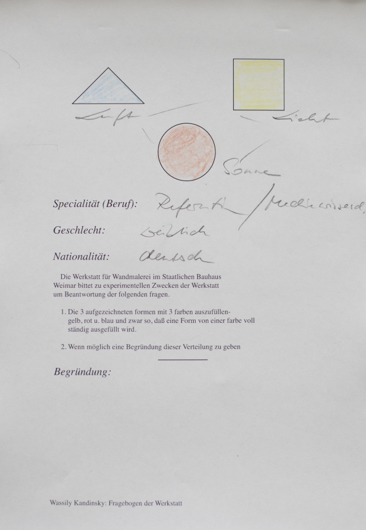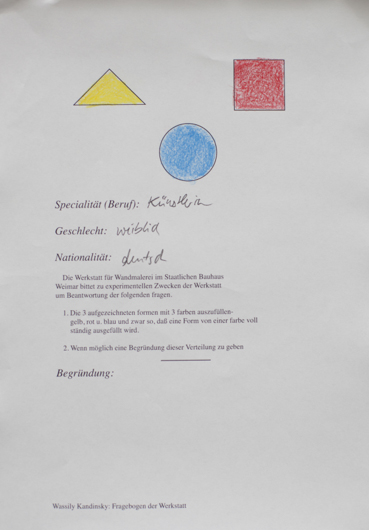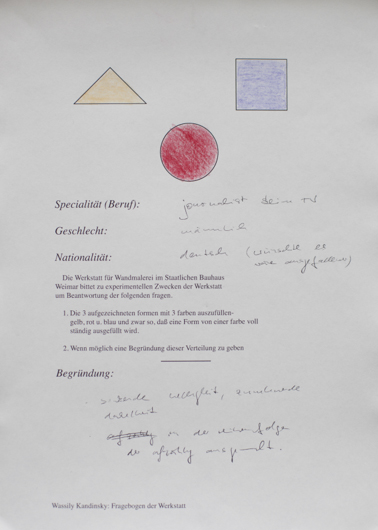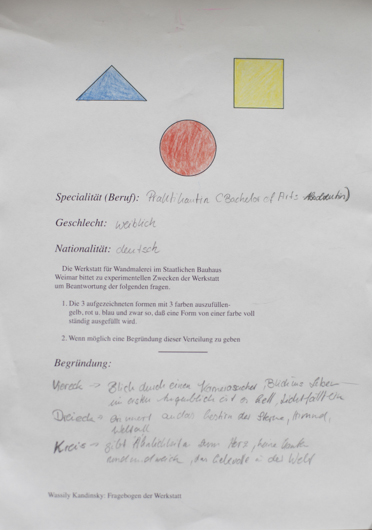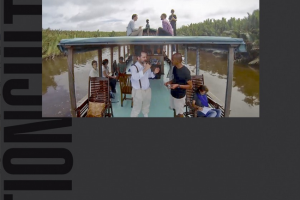The “performative experimental arrangement for an interdisciplinary discussiongroup at the Bauhaus Dessau” was about the experimental exploration of communication and interaction between the disciplines of art and science. Methodes of primatology, sociology and psychology were applied. The experiment took place in a setting on a stage. The participants (a primatologist, an architect, anornithologist, an artist) acted upon a given guideline between the fields ofdiscussion, experimenting and working together. The process was observed bydifferent means of media and personal point of views. Starting point was the question of linguistic and process-related discrepancies between differentdisciplines. In how far are taboos and conventions involved? The final material wasgenerated out of six different camera perspectives, one court drawer and differentobservers. So a multilayered collage of observing forms was generated whereas not only the participants were involved but also the leader of the experiment wasdrawn into the observation situation. In a multimedia installation based on video, text, sound, objects the observer is given the opportunity toretrace the experimentand take the positions of the different point of views.
Borders of Objectivity, 2014
[borlabs_cookie_blocked_content title=”Video”]
[/borlabs_cookie_blocked_content]
Borders of Objectivity, 2014
Emanuel Mathias
Limits of Objectivity – an observing experiment at the Bauhaus Dessau by Emanuel Mathias
Place: Stiftung Bauhaus Dessau, workshop wing, former metall workshop
Participants of the experiment – Prof. Phillip Oswalt, architect and publicist; Dr.Barbara Fruth,primatologist; Dr. Frank D. Steinheimer, ornithologist and manager of a zoological collection; Alexej Meschtschanow, artist, Moderation – Dr. Barbara Steiner, art historian, curator and author
Leader of the experiment – Emanuel Mathias, artist
Active observer – eight students of a video course and their instructor, a court artist,a journalist, five participating observers.
The artistic work with the title Limits of Objectivity emerged in the year 2013 on a three months long residency at the Bauhaus Dessau. It was supported by the SYN Stiftung Kunst Design und Wissenschaft that called for tender of artists andscientists to creatively deal with news forms of collaboration of art, design andscience. Starting point forLimits of Objectivity was the question of linguistic and procedural discrepancies between different disciplines of art and science and also the question to what extent clichés, taboos and conventions do play a role for the understandingof ones own role and the role of another discipline. Hence, the idea of anobservation experiment was born that is supposed to uncover the communication and interaction between four chosen participants of artistic and scientific nature.The title is the main question at the same time that the participants had to deal within one form or another. Methods of primatology, sociology and psychology wereapplied at the development of the experiment and whilst it. An important aspect ofthe artistic and creative processing was to have so-called active participantsobserve the experiment from different perspectives. And let them record thesituation with the means of different media like drawings, films, notes. The materialthat was recorded during the pre-talks and the three hours of experiment was thestarting point of a multi media installation. The installation was first shown in 2014at a conference with the title Deviations and Errors – Findings in art, design andscienceat the Naturwissenschaftliche Sammlung Halle. Where the observer was given the possibility to experience all the different perspectives spatially at the sametime. (…) Filmic and auditive all over recordings make visible and relativizeunexpected moments in the course of the experiment like an interference of the experimental leader or reactions of the participants who oppose the given dramaturgy of the experiment or internal discussions between the experimental leader and the presenter about the interpretation of self-established rules. The term of seemingly objectivity stands for the hypothesis: the more observers are documenting the experiment the more many-sided the possibility of the reception ofthe material will be. Many individual perspectives take the place of an otherwisesingularly point of view. Hence, a new form of perception is created by thesynchronizing and simultaneous restoring of the situation.(…) Alexej Meschtschanow (artist): »You certainly say “I” but thereby you become arepresentation of your species«. Barbara Fruth (primatologist) : »I can walk throughthe exact same forest, the exact same path with different point of views. Dependingon what is on my mind, what data I need or if I am just walking there in need ofsome bird call«. Phillip Oswalt (architect): »I do have the reversed problem:I amhaving it constantly. ( Hab hier den Zusammenhang der Aussage nicht ganzverstanden…) I rarely have the peace to get back to my own discipline. I am usuallyin the middle of any other strange situations«. Frank Steinheimer (ornithologist):»We know the interfaces but we are still wondering if we meet another discipline.About how they think and even write and present – especially present«.
Lexicon of terms – in this task the participants were asked to answer with own association words on chosen terms. The answers reflect the individual point of view. Another focus was on the question of how an association was generated by onesown professional and privat self-conception. (…) Experimental setup – The experiment took place on a decentralised stage with aclear dramaturgical chronology. The participants changed between presenting,discussions and experimenting. At the same time they were observed filmically,graphically. Observation protocols documented the experiment systematically andfinally the experiment was evaluated by questionnaires. (…)
Following an excerpt of the instruction by E. Mathias (00:02:30):»For theparticipants: I want to ask you to actively participate in the experiment. If you havequestions, remarks or uncertainties please don’t hesitate to immediately saysomething. Furthermore, I want to ask you to only speak to the other participantsand the presenter, do not address the present observers. To the already instructedobservers: You can move freely within the room to take pictures or make sketchesor notes. However, please disturb the experiment as little as possible«.(…)
Experiment of observation 1 – in the first practical part of the experiment theparticipants had the task to draw an acoustical description of an observation by theprimatologist Dian Fossey. The tables were arranged in a way that all participantswere opposed each other. So they could observe each other while drawing. Theaudience and the active observers were forming a circle around the participants.This task was meant to see what kind of visualising form the participants wouldchose and what that tells about their perspective of seeing.
Following is an excerpt of the observing study that was played acoustically andserved as template for the participants (Vielleicht lieber das Original auf Englischeinsetzen???): »(…) The aggressors approached each other to about one meter.They froze in the middle of their movement parallel to each other and grew stiff with averted sights. The tense anticipation of both silverbacks transferred to all the otheranimals which also froze without moving any further. Finally Hatari could hold ontoit anymore. Being on his hind legs he drummed on his chest and clapped on theplants between himself and Beethoven (…)«. (Fossey 1989:101)
Experiment of observation 2 – Now following is a second experiment. Theparticipants have to describe and interpret two paintings which were made by an Orang-utan. The participants don’t know that.
Final task and evaluation – At the final task the participants work together creatingan overview of differences and similarities of their methods. One insight showed that certain predominant stereotypes and ideas are opposing to pre-assumptions.(…) It turned out that by trying to show a temporary and spatial limited eventthrough different perspective (filmically, graphically and through notes) and in ansubsequent synchronised form, that the coincidence of incidents becomes evident by the synchronization of different perspectives on the same event. Which suggestsa form of objectivity. In the end, there will be a new form of perception whencreating the same observed situation in form of a synchronized, simultaneousdepiction of these perspectives.
Ablaufplan Experiment
Order
Limits of objectivity
14:00 – 14:05
Welcome and instructions
14:05 – 14:15 (single speakers)
Introduction 1 (presenter, 4 debaters)
Introduction by the presenter with a personal object
14:15 – 15:55
3. introduction 2 (single speakers)
introduce a workflow of a project with visual aidseach
10 min (altogether 40 min)
1.-Phillip Oswalt – (Die Anthropozän Küche)
2-Frank Steinheimer – (ornithologische Nomenklatur)
3-Alexej Meschtschanov – (Stühle Arbeit)
4-Barbara Fruth – (Projekt Vergleich Bonobos – Schimpansen)
14:55 – 15:15
4. group task 1 (all speakers together)
work on list/ graphic or drawing of variables with similarities and differences of workflows/ conditions Announcement Bst: break 15 min
15:15 – 15:30
—— break ——
coffee and water, snacks
15:30 – 15:45 (single speakers)
experiment 1 (Exp.feld1)
—— acoustic track 1——
15:45 – 16:05 (speakers in groups of 2)
experiment 2 (Exp.feld3)
———2 paintings———
16:07 – 16:37
group task 2 (all speakers together)
task for all 4 speakers: Is it possible to work interdisciplinary? And if so, how? Whatare the main differences in the work process?
16:40 – 17:00 (single speakers)
announcement of evaluation in groups and subsequently finishing the experiment


